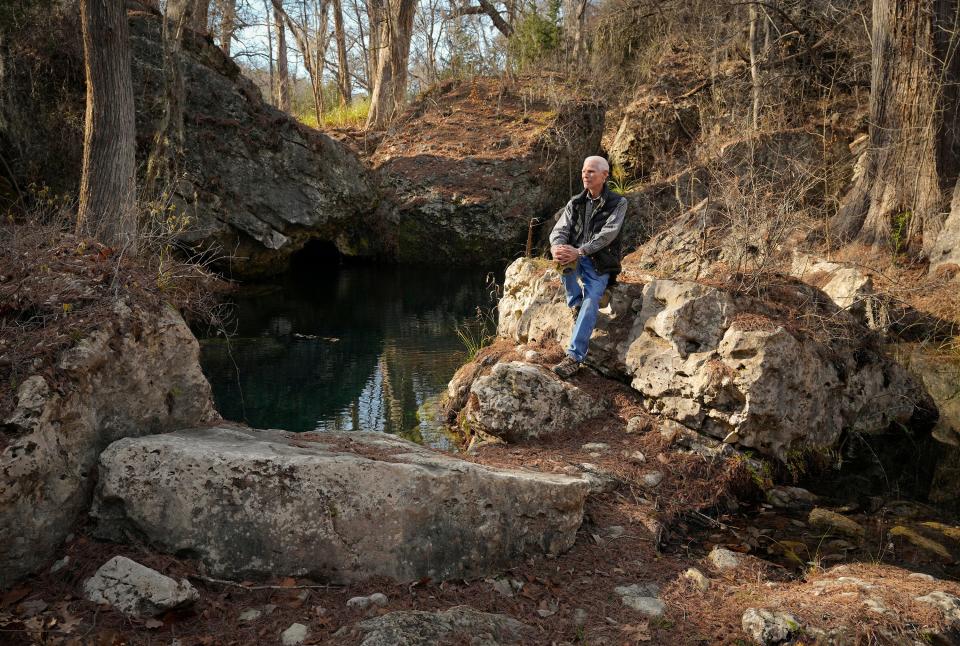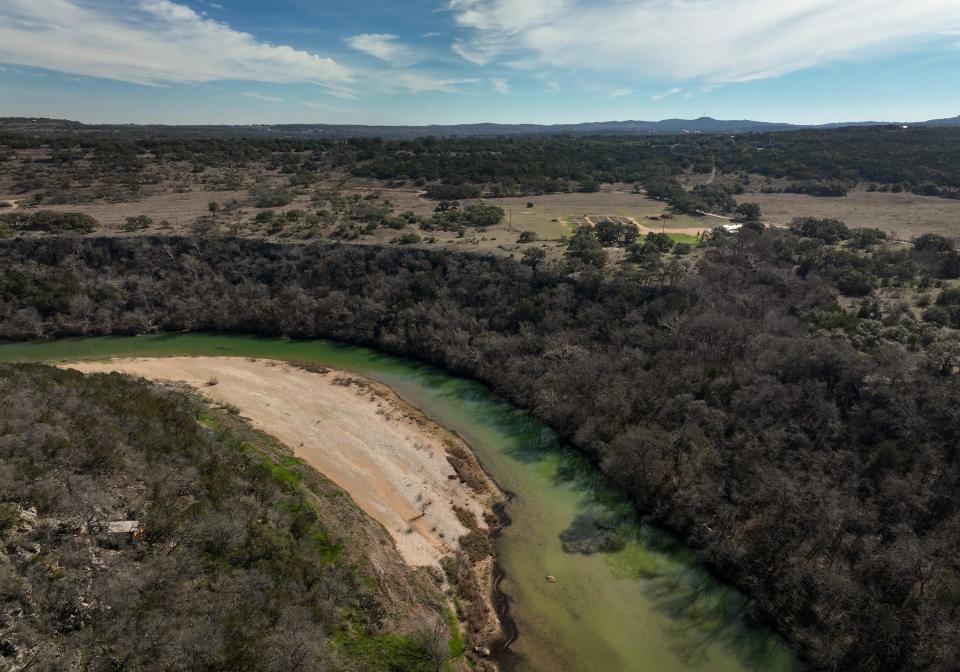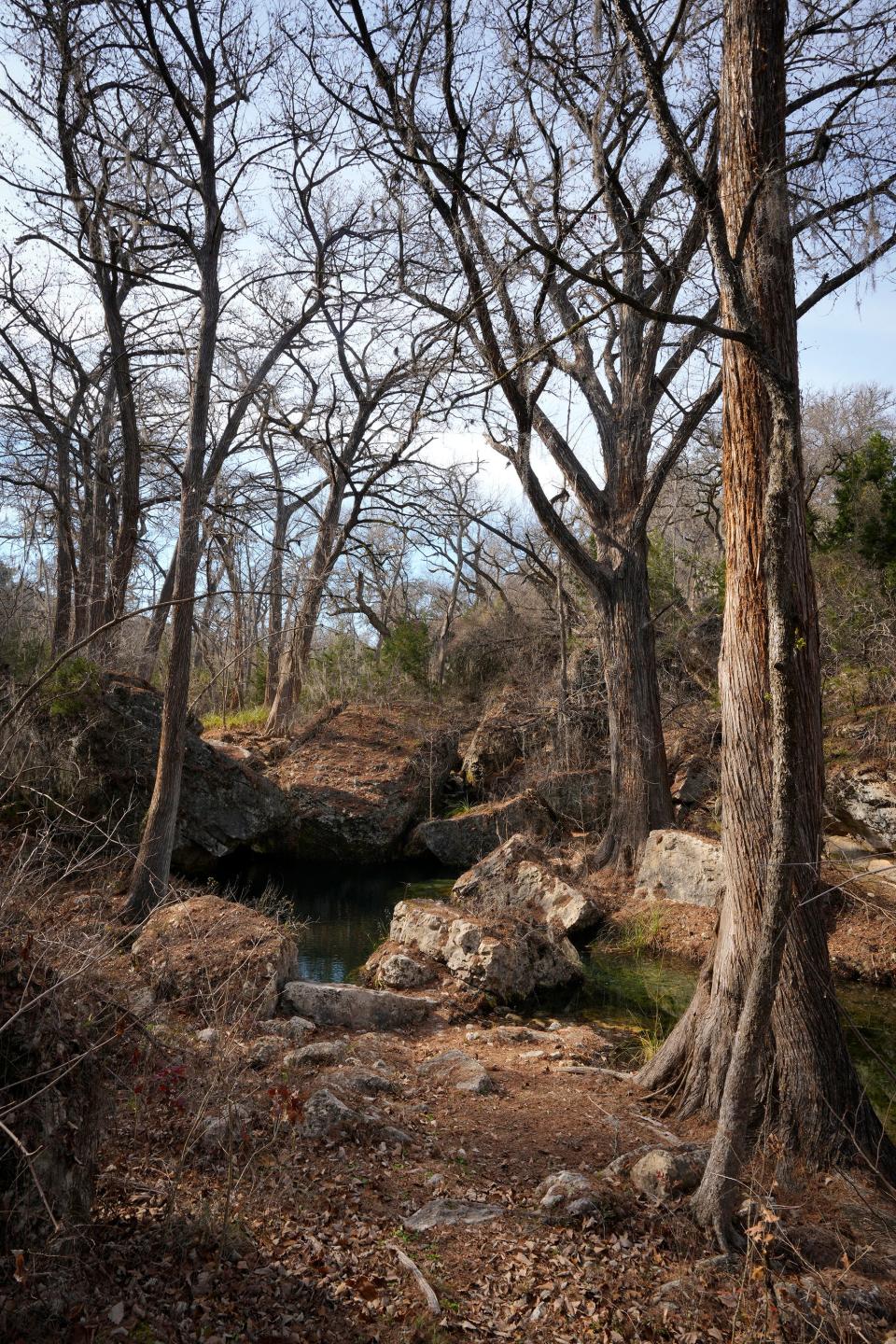Mirasol Springs resort development gets pushback from landowners, environmental activists
Mirasol Springs, a proposed luxury ecoresort on 1,400 acres straddling Hays and Travis counties in a relatively undeveloped area off Hamilton Pool Road, has been a subject of controversy among environmental advocates and neighboring landowners.
Central Texas environmental groups and concerned citizens say the Dripping Springs hotel development marketed as an ecolodge could threaten the local ecosystem. The hotel developers argue that Mirasol could set a precedent for sustainable growth in the Hill Country, having set aside nearly 1,000 acres in a conservation easement, as well as entering into a partnership with the University of Texas.
The development is uphill from the 500-foot-wide Roy Creek Canyon and its springs, which flow into the adjacent Pedernales River. Jason Singhurst, a botanist at the Texas Parks and Wildlife Department, previously said the canyon is probably one of the last untouched canyons in Texas.
The Texas Commission on Environmental Quality will hold a hearing at 7 p.m. Monday at the Dripping Springs Ranch Park for Mirasol’s Texas Land Application Permit, which would allow the subsurface irrigation of 39,000 gallons daily of treated wastewater on a 16-acre field uphill from the river and the canyon.
The university will run a field station on the property, supported by a $50 million donation. The field station will feature research and teaching labs dedicated to the study of Hill Country biodiversity. In its announcement, UT said the field station would help landowners and policymakers increase awareness of how climate, species and development affect the land, water and other natural resources. Mirasol's opponents said it was simply greenwashing.

The minutiae of permits dictating surface and groundwater use and the creation of an irrigation wastewater field have been the subject of more than two years of conversations, compromise and disputes between a group of neighbors and environmental advocates, and Mirasol’s robust team of scientists, attorneys and public relations professionals, helmed by Mirasol owner Steve Winn, the Dallas-based billionaire founder of RealPage, a real estate and property management software company.
The development’s opponents say the proposed wastewater treatment plan could threaten the river and the canyon, with arteries into the deep, cavernous springs that percolate into the Trinity Aquifer. The area's limestone surface has a Swiss cheese-like structure whose holes allow liquids to permeate into groundwater.
Mirasol spokesperson Scott Dunaway said Mirasol would actively monitor stream, groundwater and spring flows, and noted that the project’s planning has been driven by prevention, detection and mitigation principles. Furthermore, he said Mirasol's team determined there is enough soil to soak in the contents of the wastewater and that the meadow would be planted with absorbent grasses to soak in any fluid.
Environmentalist, Roy Creek Canyon landowner share concerns over development
Lew Adams, an owner of half of Roy Creek Canyon, a 40-plus-acre property bordered on three sides by Mirasol, is among the area's most vocal landowners. He is concerned that phosphorus, a byproduct of wastewater treatment, could mix into runoff and leach into the canyon’s turquoise springs. The resulting algal blooms could suffocate the wildlife — including the rare yellow-speckled salamander that calls the springs home. The TCEQ has not included any limits for phosphorus emissions in the permit.
Adams fears the area could become uninhabitable for the species that have evolved and existed there for millennia. Texas Parks and Wildlife cites destruction or degradation of habitat as the No. 1 cause of the decline or extinction of native species. Adams also worries that surface water and groundwater extraction could threaten the already aquatically sensitive area.

"What are we going to do with this place? If the creek were to go dry? What is the value then? All the cypress trees will start to diminish; this whole deciduous forest which relies on (the springs) could be endangered," Adams said.
Brian Zabcik, an advocacy director in the Save Barton Creek Association, said there are also fears that despite mitigative attempts to reduce runoff by planting absorbent grasses, the field could still become oversaturated with waste. Zabcik pointed out that there would be less concern about contaminants if the wastewater field were farther away from bodies of water.
"The location of the field is problematic. ... If the (Texas Land Application Permit) facility was far away from the Pedernales, Hamilton Pool (and Roy Creek Canyon), there would be less concern," he said.
Robert Mace, a hydrogeologist at Texas State University who is unaffiliated with parties on either side but is familiar with the controversy, said it is difficult to prevent wastewater contamination from getting into limestone, and that contamination is inherent in developments.
"This is innovative — for a developer," Mace said, "but conceptual and reality are two different things, especially in the Hill Country, with the limestone."
Mirasol describes plans for water use
Mirasol’s team said most of its water, about 35 million gallons annually, would come from its surface water contract, issued by the Lower Colorado River Authority. Mirasol expects to extract groundwater only a quarter of the time.

However, a provision in the drafted groundwater permit states that Mirasol would have to abide by a drought curtailment. Currently, more than 88% of Hays County is experiencing moderate to severe drought.
The groundwater permits request the use of about 18.4 million gallons of groundwater annually from the Hays Trinity Groundwater Conservation District and 9.2 million gallons annually from the Southwestern Travis County Groundwater Conservation District.
According to Charlie Flatten, general manager of the Hays Trinity Groundwater Conservation District, the volume of groundwater requested from the district would make the permit among the largest issued in Hays County, rivaled only by housing developments. Flatten said his district has countered with a different offer, reduced by 20%, to 14.6 million gallons a year. Flatten could not comment on whether the recommendation would be a successful compromise between all involved parties.
If a compromise is not reached by March 7, the permit will be forwarded to the State Office of Administrative Hearings' extrajudiciary panel.
This article originally appeared on Austin American-Statesman: Landowners, activists push back on Mirasol Springs resort development

